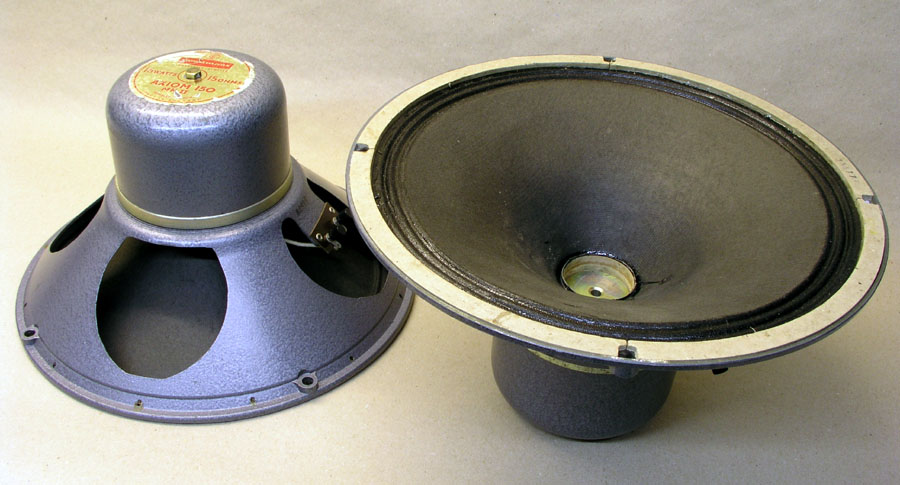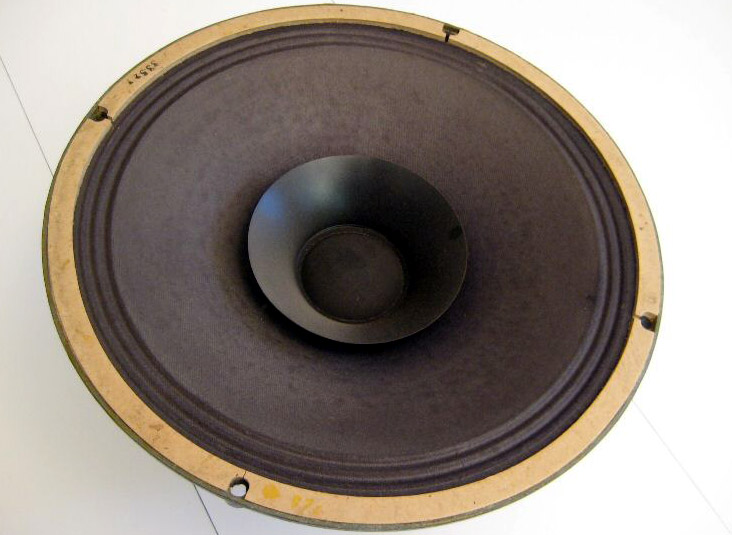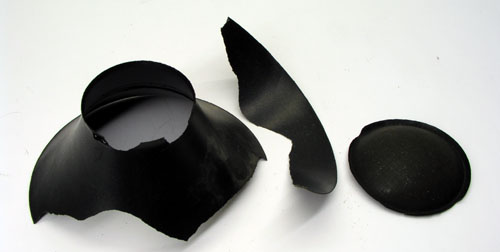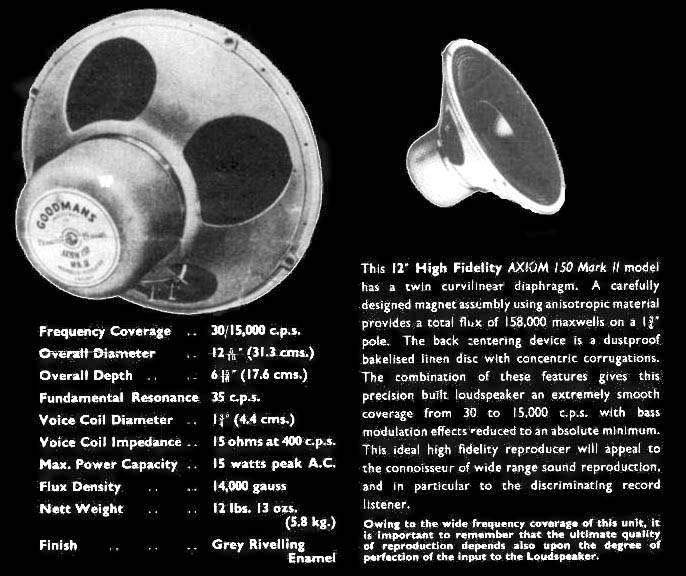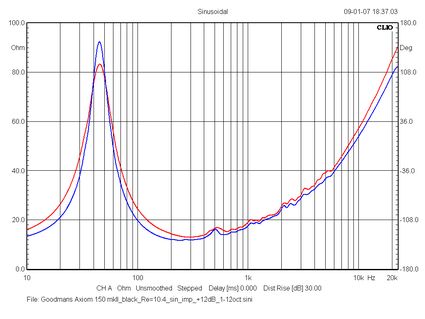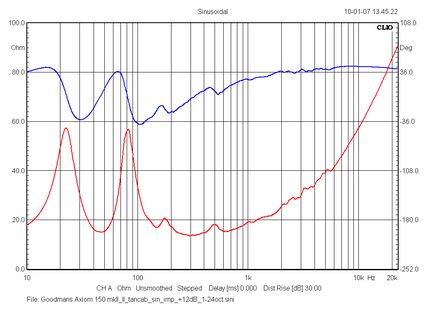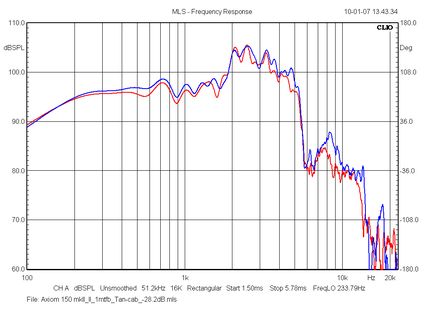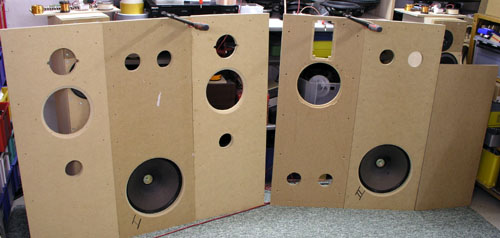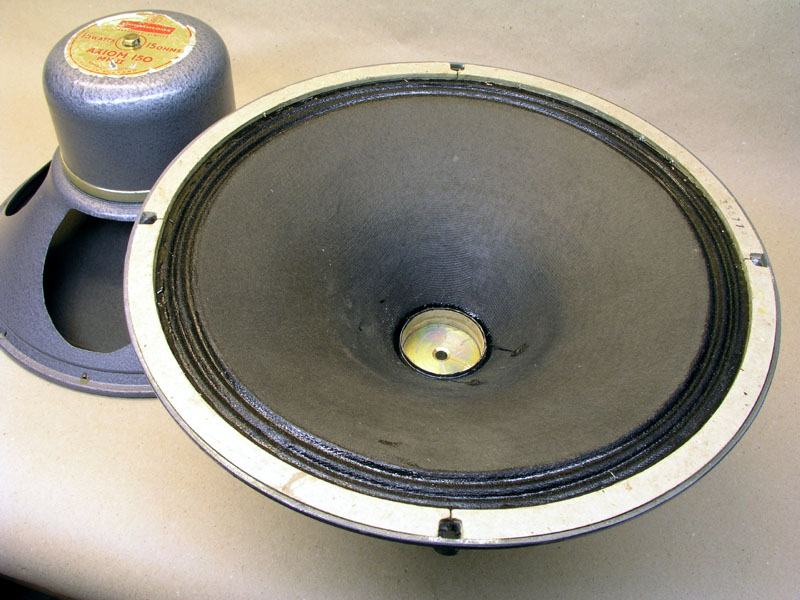|
Goodmans Axion 150 mkII, 16 ohms
|
|
In search for suitable drivers
for an open baffle 3-way, these Goodmans came up and I
took my chances and bought them. Buying vintage drivers
on eBay is gambling and in particular when we're talking
drivers some 40 years old; drivers having paper surrounds
and paper voice coil formers. Paper may over time take up
moisture and we run the risk of rubbing voice coils and
suspensions having lost compliance. TS-data may be way
off what they were back then. The drivers reported here
were so and so, but suitable for what I had in mind.
The cones were in
good shape and not too much voice coil rubbing. Magnets
were in perfect shape (alnico may weaken over time). This
could be concluded from TS data measurements. These
12" drivers from Goodmans were meant as full-range
units and came with an odd trumpet whizzer cone (seen
below) and I immediately removed these. The driver basket
can be removed from the magnet structure simply by
removing four screws and this helps a lot in restoration
as the voice coil now can be inspected from all sides.
Assembling the speaker again is tricky business as the
magnet gap is very narrow, 1 millimeter. Normally we can
add thin plastic sheets between the voice coil and center
polepiece, but not good enough here. The tolerances are
so narrow that I had to run a sine wave (40 Hz) through
the units while tightening the screws again. Still some
voice coil rubbing and I sanded the inside of the voice
coil while running the 40 Hz sine wave. This way small
paper surface irregularities can be removed until it runs
smoothly. Take care when doing so as the voice coil
former is very thin and removing paper will weaken the
cylinder. More details on this can be found in the
JBL L26 file, the JBL
bass driver here having the same problem.
Close to what the Axiom 150 mkII would look like new.
The
whizzer cones were removed from the drivers.
Measurements TS-data after restoration of surrounds and recentering of voice coils. Now, a BL factor of 20 is not an everyday sight and these drivers are extremely sensitive. Calculated 97 dB/1W/1m. And measurements confirm this.
Two things from the above LspCAD modelling: The Speaker Unit Editor is a great feature allowing you to check your measurements by cross calculation. As can be seen there's a good correlation between data. My Tannoy test cabs will serve as initial cabs for these drivers and a decent alignment can be a achieved giving a good response down to 50 Hz. 150 liter would take the response down to 40 Hz, but these drivers will be tried in an open baffle construction. Preliminary "test" can be seen below.
Frequency
response of two drivers in test cabs, quite nice.
The following three graphs were made in LspCAD just to get an idea of how easy - or difficult - the Axioms would be in more conventional applications. Above modelling for a potential two-way system with a point of crossover around 2.5 kHz. I've tried setting up a two-way system with the Axiom bass and Wharfedale Super 3 tweeter with a point of crossover around 5-6 kHz and got a reasonably flat response. The sound wasn't bad at all. Having some 550 cm^2 cone area for midrange is special and the transient capability of these drivers is phenomenal.
Above
modelling a point of crossover around 800 Hz. A fairly
smooth decline of the Axiom response is seen.
Simulation
of a 3-way system with the Fostex FE126E for mid and
Here's
my open baffle test made from whatever I had at hand in
my workshop.
So much on the Axiom 150 mkII drivers. |
